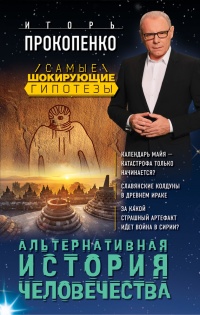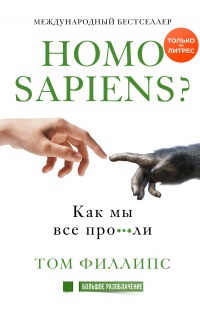Читать книгу "Homo Viridae: человек как вирус - Scientae Vulgaris"
Шрифт:
Интервал:
Закладка:
94. Spiegel and Springer, “Codex Hammurabi,” 74.
95. Barbara Böck, “When You Perform the Ritual of ‘Rubbing’: On Medicine and Magic in
96. Ancient Mesopotamia,” Journal of Near Eastern Studies 62 (2003): 7–8.
97. Majno, The Healing Hand
98. https://www.statista.com/statistics/263962/number-of-chickens-worldwide-since-1990/
99. Kwiecinski J. The Dawn of Medicine: Ancient Egypt and Athotis, the King-Physician. Perspect Biol Med [Internet]. 2013 [cited 2017 Oct 20];56(1):99–104. Available from: http://muse.jhu.edu/content/crossref/journals/perspectives_ in_biology_and_medicine/v056/56.1.kwiecinski.html
100. Vassilyadi F, Panteliadou A-K, Panteliadis C. Hallmarks in the History of Enteral and Parenteral Nutrition. Nutr Clin Pract [Internet]. 2013 Apr 13 [cited 2017 Oct 20];28(2):209–17. Available from: http://journals.sagepub.com/doi/10.1177/ 0884533612468602
101. Sigerist HE. What medicine has contributed to the progress of civilization. Int Rec Med Gen Pract Clin [Internet]. 1955 Jun [cited 2017 Oct 20];168(6):383–91, Available from: http:// www.ncbi.nlm.nih.gov/pubmed/13242210
102. Mann JE. Hippocrates, on the art of medicine. Introduction. Stud Anc Med [Internet]. 2012 [cited 2017 Oct 20];39:1–49. Available from: http://ncbi.nlm.nih.gov/pubmed/22586886
103. Kock W. A survey of the history of medicine. Nord Medicinhist Arsb [Internet]. 1977 [cited 2017 Oct 20];5–17. Available from: http://ncbi.nlm.nih.gov/pubmed/11627384
104. See von Staden H: Herophilus. The Art of Medicine in Early Alexandria, fragments 63a-74. Cambridge, UK, Cambridge University Press, 1989, pp 187–194, fragments 77a-78, pp 196–199
105. Cf Harris CRS: The Heart and the Vascular System in Ancient Greek Medicine. Oxford, UK, Oxford University Press, 1973, pp 211–213; von Staden H: Cardiovascular puzzles in Erasistratus and Herophilus. In XXXI Congresso Internazionale di Storia della Medicina. Bologna, Italy, Monduzzi Editore, 1988, pp 681–687
106. Cf Jackson R: Doctors and Diseases in the Roman Empire. Norman, Oklahoma/London, UK, University of Oklahoma Press, 1988, pp 112–129, On Anatomical Procedures VII.13. In Claudii Galeni Opera Omnia, Vol. 2. Edited by CG Kuhn. Leipzig, Germany, C Knobloch, 1821, pp 632–634.
107. Sokolowski F: Lois sacrees de l’Asie Mineure. Paris, France, Editions E de Boccard, 1955 (LSA); Sokolowski F: Lois sacrees des Cites grecques, Supplement. Paris, France, Editions E de Boccard, 1962 (LSS); Sokolowski F: Lois sacrees des Cites grecques. Paris, France, Editions E de Boccard, 1969 (LSCG);
108. LSCG 55, 57, 67, 97, 116, 124, 154, 156, 171; LSS 24,53,54, 91, 115, 119; LSA 12,51; cf von Staden H: Women and dirt, parts III–IV. Helios 19, 1992
109. строки Антигоны 999-1047
110. строки Ипполита 1437–1438
111. Callimachus: Hymn to Delos 206–211; [2] Herophilus: fragment 196, pp 367–368; cf Most GW: Callimachus and Herophilus. Hermes 109: 188–196, 1981; [2], pp 394–395 19. Teles: On Exile, p 31.9-10. In Teletis Reliquiae, 2nd edition. Edited by 0 Hense. Tubingen, Germany, JCB Mohr, 1909
112. Vernant JP: A la table des hommes. In La cuisine du sacrifice en pays grec. Edited by M Detienne, JP Vernant. Paris, France, Gallimard, 1979, pp 92–93; Durand JL: Betes grecques. Ibid, pp 141–143, 156–157; Vernant JP: Manger au pays du Soleil. Ibid, p 244
113. Bremmer, J. (1993). The Skins of Pherekydes and Epimenides. Mnemosyne, 46(2), fourth series, 234–236. Retrieved January 14, 2021, from http://www.jstor.org/stable/4432249
114. e Servius’ commentary on Virgil’s Aeneid 1.367; Appian: Roman History VIII (Libya), 1.1–5., Justin: Epitoma Historiarum Philippicarum Pompei Trogi, XVIII.5.8-11, Timaeus: 566F82 Jacoby. Cf Scheid J, Svenbro J: La ruse d’Elissa et la fondation de Carthage. Annales. Economies Societes Civilisations 2:328–342, 1985
115. Bachrach, Bernard S. Warfare in medieval Europe, c.400-c.1453. Bachrach, David S., 1971-. London. ISBN 978-1-138-88765-7. OCLC 961307661.
116. Smith, William, ed. (1870). Dictionary of Greek and Roman Biography and Mythology.
117. “Roman Medicine”. Ancient History Encyclopedia. Retrieved 2020-12-07
118. De Vos, Paula (2010). “European Materia Medica in Historical Texts: Longevity of a Tradition and Implications for Future Use”. Journal of Ethnopharmacology. 132 (1): 28–47. doi:10.1016/j.jep.2010.05.035. PMC 2956839. PMID 20561577.
119. Magiorkinis E, Sidiropoulou K, Diamantis A (January 2010). “Hallmarks in the history of epilepsy: epilepsy in antiquity”. Epilepsy & Behavior. 17 (1): 103–8. doi:10.1016/j.yebeh.2009.10.023. PMID 19963440. S2CID 26340115.
120. Temkin O (1 March 1994). The Falling Sickness: A History of Epilepsy from the Greeks to the Beginnings of Modern Neurology. JHU Press. p. Section 1. ISBN 9781421400532.
121. Israelowich, Ido (2015-01-23). Patients and Healers in the High Roman Empire. JHU Press. pp. 90–100. ISBN 9781421416281
122. Surendranath Dasgupta (1922). A History of Indian philosophy. 1. p. 284.
123. Kaviratna, Avinash C.; Sharma, P. (1913). The Charaka Samhita 5 Vols. Sri Satguru Publications. ISBN 978-81-7030-471-5.
124. Buck, William and van Nooten, B. A. Ramayana. 2000
125. Mitchell et al. 1999, стр. 1–2; Loewe 1993, стр. 197
126. Guilk, Robert van (2015). The Gibbon in China: An Essay in Chinese Animal Lore. E.J. Brill. p. 38. ISBN 978-7547507391.
127. Erskine, Andrew (April 1995). “Greece & Rome, 2nd Ser”. Culture and Power in Ptolemaic Egypt: The Museum and Library of Alexandria. 42 (1): 38–48
128. Wolfgang Uwe Eckart: Byzanz. Hüter des Wissens. In: Medizin im Mittelalter. Zwischen Erfahrungswissen, Magie und Religion (= Spektrum der Wissenschaften. Spezial: Archäologie Geschichte Kultur. Band 2.19), 2019, S. 20–27, hier: S. 21–25.
129. Pedanius Dioscurides – Der Wiener Dioskurides; Codex medicus Graecus 1 der Österreichischen Nationalbibliothek. Graz: Akademische Druck– und Verlagsanstalt (= Glanzlichter der Buchkunst. Band 8), Kommentar von Otto Mazal S. 3 f.
130. Geschichte der Medizin by Neuburger, Max, 1868–1955, стр 104, https://archive.org/details/geschichtedermed02neub
131. Las víctimas de hace 1.500 años ayudan a esclarecer la evolución de la peste, Un equipo de científicos secuencia el ADN de la bacteria que causó la pandemia en época del emperador Justiniano. Laura Rivas Martines. 2014
132. Keys, Davis (2000). Catastrophe: An Investigation into the Origins of Modern Civilization. Ballantine Books. pp. 296. ISBN 9788470398131
Внимание!
Сайт сохраняет куки вашего браузера. Вы сможете в любой момент сделать закладку и продолжить прочтение книги «Homo Viridae: человек как вирус - Scientae Vulgaris», после закрытия браузера.




